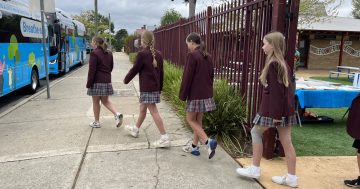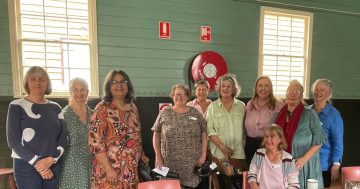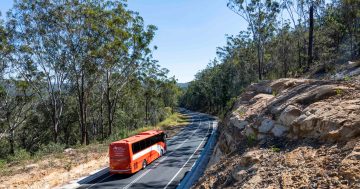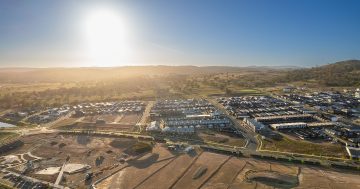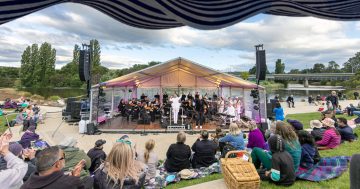
The Public Transport Association of Canberra argues more people would use buses if services were better integrated across the ACT-NSW border. Photo: Q City Transit, Facebook.
It’s the blight of Queanbeyan, Jerrabomberra and Googong. They’re so close to Canberra’s borders they’re almost Canberra, but not quite. There have different government services, different registration requirements for cars, and perhaps most irritatingly for the horde of week-day commuters, different bus services.
The ACT is serviced by Transport Canberra (previously ACTION), while over the border, it’s Q-City Transit. A local public transport advocacy group has called for the ACT and NSW governments to put their heads together to streamline the connection between the two.
The Public Transport Association of Canberra (PTCBR) said both governments need to work together to integrate services and fares.
“But there are also things the NSW Government could do now,” PTCBR chair Ryan Hemsley said.
“The NSW Government has a capable and responsive operator in Q City Transit, which can put on more services. All that’s needed is the political will.”
The population of the Queanbeyan-Palerang region has increased by more than 11,000 people between 2015 and 2020 – comparable to one of Canberra’s regions – with the majority of trips taken by car. The towns of Jerrabomberra and Googong have also grown significantly in that time.
“A proven method to reverse this trend [for private car use] is to increase the frequency, reliability and attractiveness of public transport,” Mr Hemsley said.
Transport for NSW released the Queanbeyan Region Integrated Transport Plan for public feedback in February 2022. This outlined ways the transport network in and around Queanbeyan could be improved and focussed on active travel, public transport, roads, parking and public spaces.
Consultation is now closed, but not before PTCBR had rattled off several recommendations, starting with a common method of ticketing and payment.

Passenger boarding a Q City Transit bus. Photo: Q City Transit, Facebook.
Q City uses Smart Card, while Transport Canberra uses MyWay. Both accept fares in cash. Mr Hemsley said the same ticketing system should be used across both networks.
“We should also integrate Q City timetables and route numbering with Transport Canberra, enabling passengers to use both routes and stops seamlessly.”
He recommended buses run every hour, seven days a week between Canberra, Queanbeyan, Jerrabomberra and Googong, with frequent Rapid-type routes between Queanbeyan and Canberra City. This also includes direct routes from Googong and Jerrabomberra to Canberra.
“While the 830 to Barton and Canberra City and 831 to Fyshwick and Woden are decent services, they need to be upgraded to run every 15 minutes, like the Rapids across the border,” he said.
“And connections to Jerrabomberra and Googong are so poor as to be almost non-existent. Buses are less than hourly, don’t run on Sundays, and have no direct access to Canberra.”
Mr Hemsley cited reports of Googong residents trying to organise carpools on social media because there’s no acceptable bus service, “and it’s important not to forget Oaks Estate residents, who live in the ACT, but only have access to a handful of Queanbeyan bus services each day.”
He suggested new routes could travel along Uriarra Road and Canberra Avenue in the short term and along Yass Road and Pialligo Ave via the Canberra Airport and Russell in the medium term.
In the longer term, he recommended Q City services integrate with Canberra’s light rail network.

Transport Canberra bus. Photo: File.
Mr Hemsley said all of this needs to start at home, where Queanbeyan residents need more frequent services to access their own CBD.
“We need to improve the attractiveness of local bus routes with higher frequency services and covered bus stops,” he said.
Mr Hemsley said better public transport would also help address Queanbeyan’s parking woes, especially as more apartments come online.
“The only option for growing cities is to get people out of their cars and onto active and public transport,” he said.
“For growing cities like Queanbeyan, additional public transport services are a matter of when not if. It’s not a problem that can be solved by throwing more parking at it.”
Transport for NSW will release a consultation report mid-year.
Original Article published by James Coleman on Riotact.







